There are 365 species and 100 subspecies of grevillea, making grevillea the third largest genus in Australia.
Many species attract birds into the garden as they produce huge quantities of nectar. They are so many different colours, shapes and sizes and they flower for such an extended period of time, there's so many reasons to grow them.
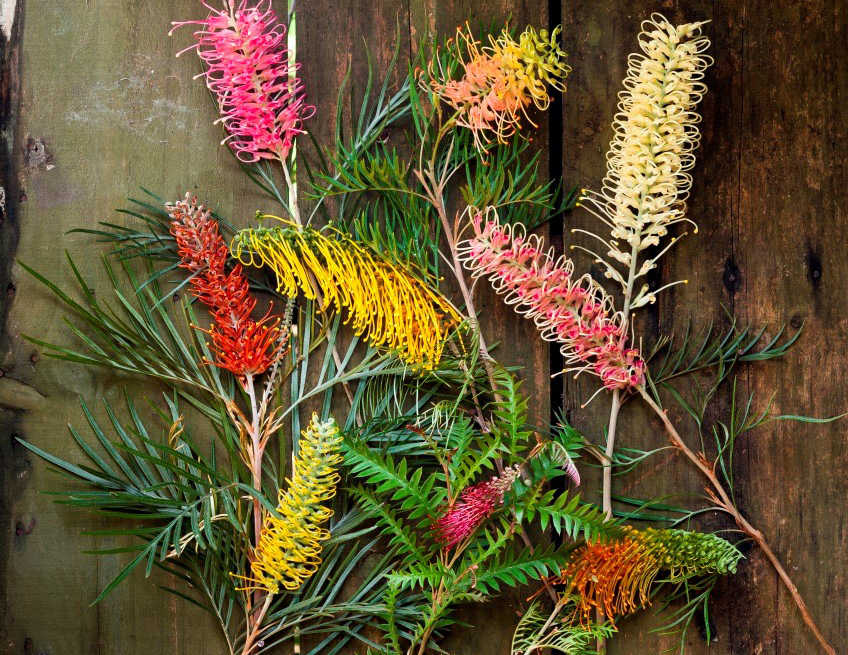
Grevilleas pinned to the door include members of the 'Honeybird' series, including Sylvia, Majestic, Tango, Golden Lyre, Peaches and Cream and Moonlight. Photo - Andrew Lehman
Care
Grow your grevilleas in well drained soils is the key to success. In areas with clay soils you will need to build up the soil to knee height to improve
the drainage before the grevilleas will do well! Feed with a specialised native plant food. Prune lightly from day one and often after every flush
of flowers to avoid legginess. Pruning a little and often will extend the length of your grevilleas life and create a handsome compact bush. Yes you
may need to sacrifice some flowers for the sake of pruning, but they'll quickly bounce back with more.
Planting
Saturate the root ball before planting. Dig a hole twice the size of the pot. Prune off all coiled roots at the base. Plant will quickly develop straight
roots. Water every 2 to 3 days until established. All grevilleas prefer a well-drained spot with plenty of sunshine.
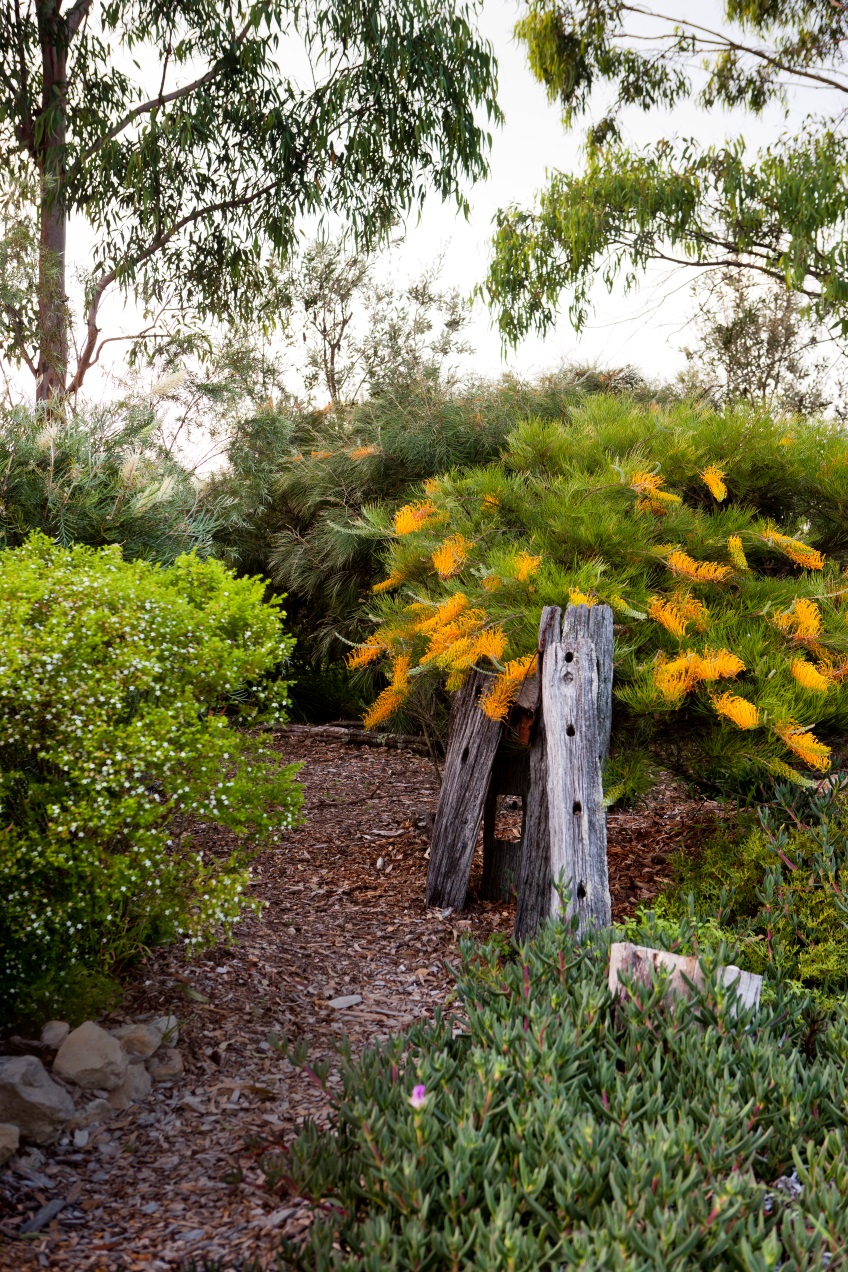
Grafted 'Golden Lyre' growing in the garden at Boongala, Kenthurst. Photo - Andre Lehmann
Uses
Bird attracting, larger varieties for privacy hedge, smaller growers for a driveway hedge or single specimen. They are great in flower borders as they
never seem to stop flowering.
Our favourites:
'Sylvia' is a seedling from 'Pink Surprise' with long flowering with rosy pink flowers, hates frost, grows 2m. Some varieties
are grafted with a much broader tolerance to weather conditions. We just love this cultivar and growing to only 2m it makes the perfect privacy hedge.
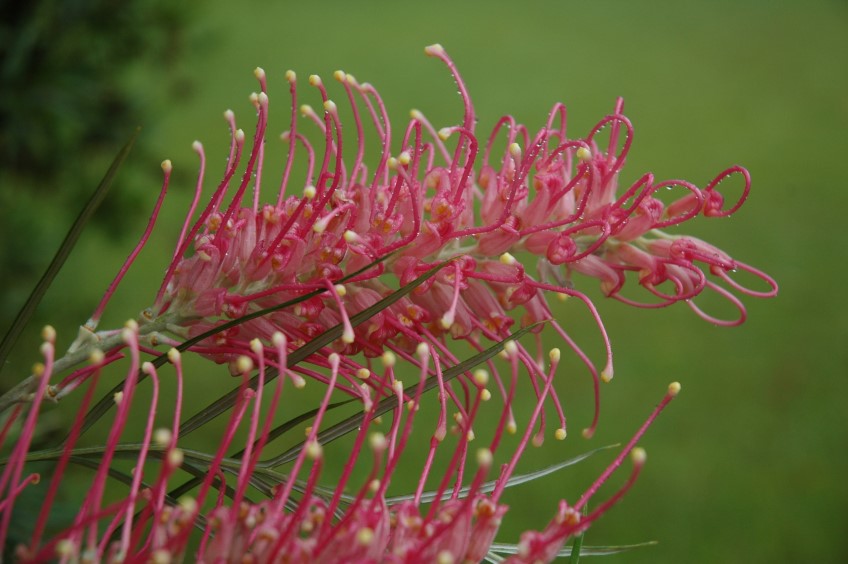
Photo - photolibrary.com
'Peaches and Cream' One of the best bloomers for a hot summer garden with lime, peach and cream coloured flowers. We love this little
gem. It grows to 1.2 m and spreads 1.5m. ...tough and drought resistant! Spidery flowers are palest cream lightly tinged with pink with a touch of
lime green at the tip. They make a superb flower arrangement.
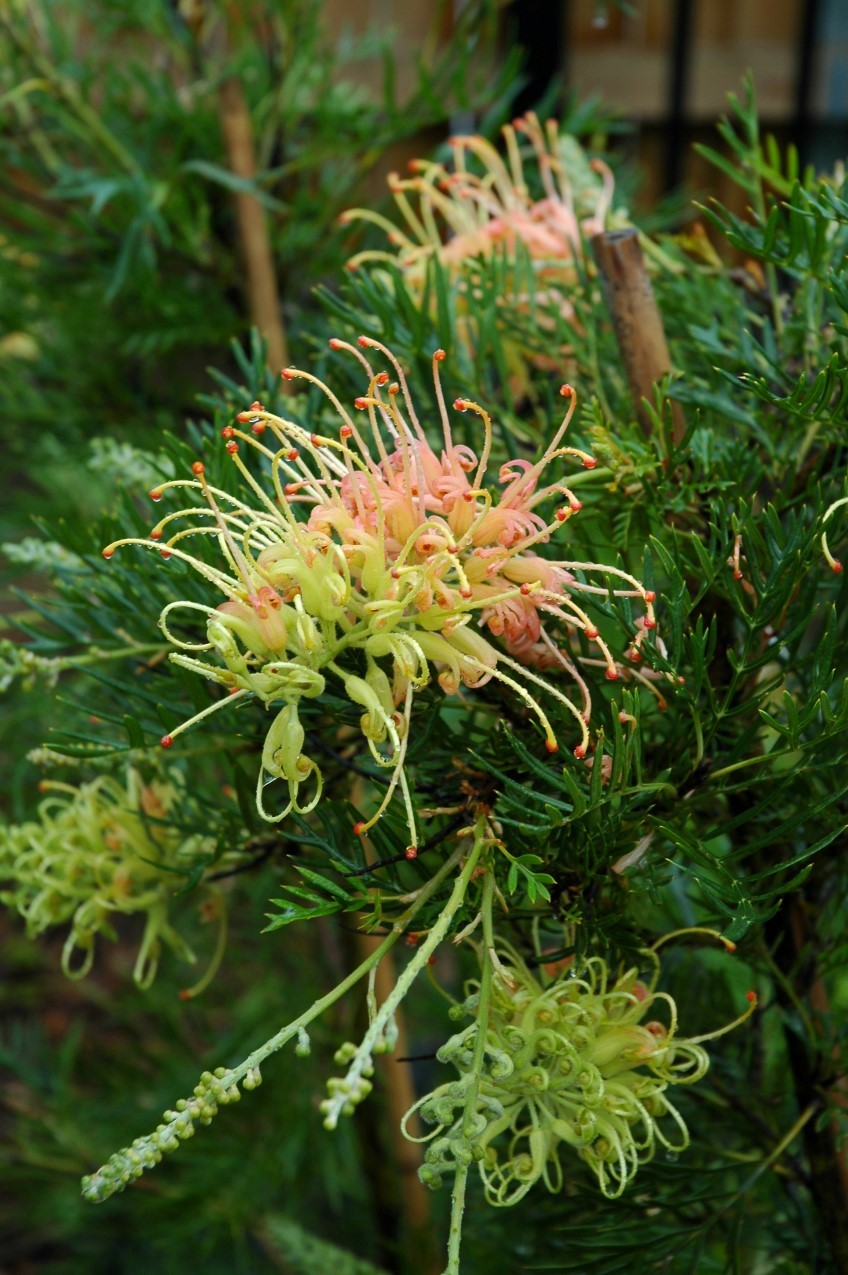
Definately a favourite, 'Peaches and Cream'. Photo - Linda Ross
'Golden Lyre' has long golden plumes of flower and is one of the most stunning grevilleas around. Look out for grafted specimens,
grafted on 1.5m Silky Oak trunks, resulting in a waterfall of flowers.
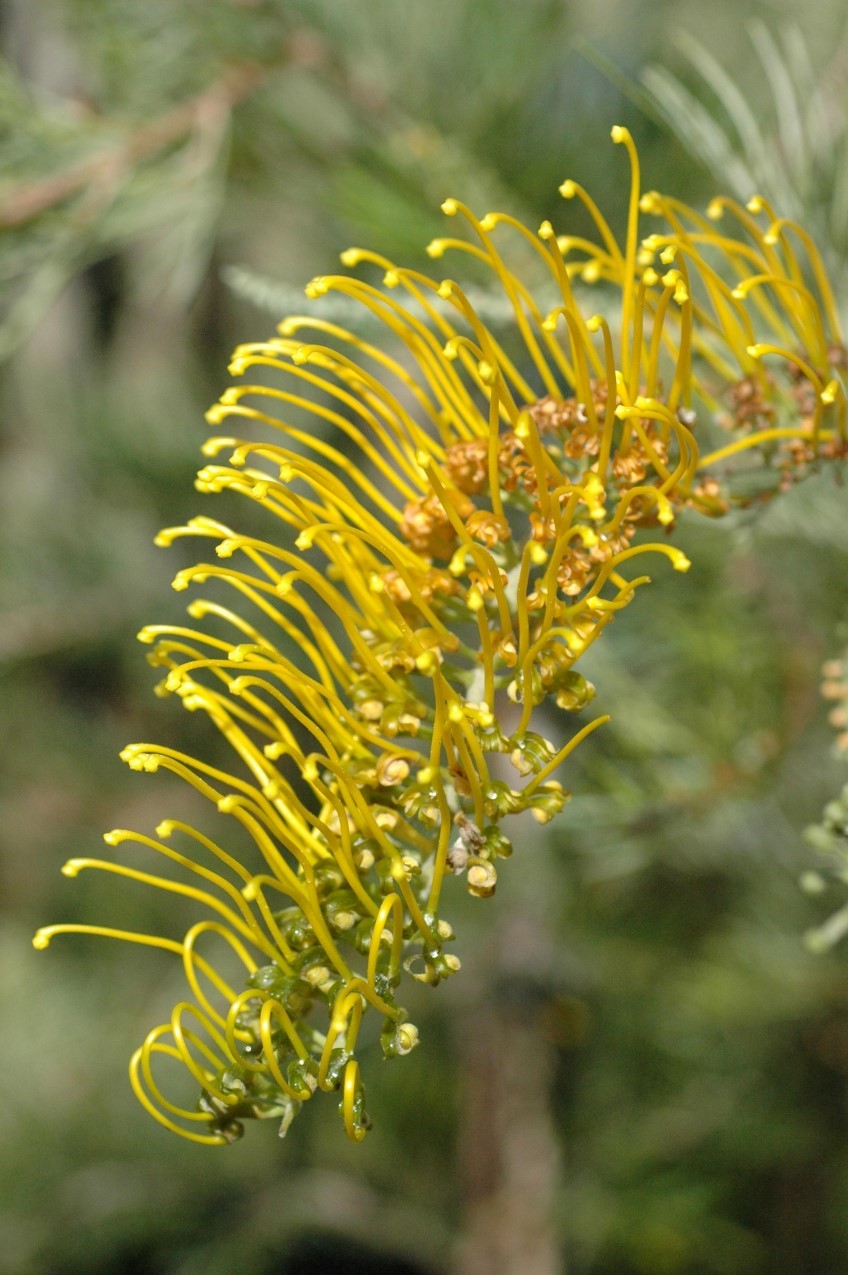 'Golden Lyre' weeps from a grafted standard. Boongala garden, Kenthurst. Photo - Andrew Lehmann
'Golden Lyre' weeps from a grafted standard. Boongala garden, Kenthurst. Photo - Andrew Lehmann
'Flamingo' Grows 3m x 3m with up to 13 flowers on each stem, waying down the branches so it looks like a flamingo feeding. Tolerant
of light frosts and prefers a sunny spot, well drained soil.
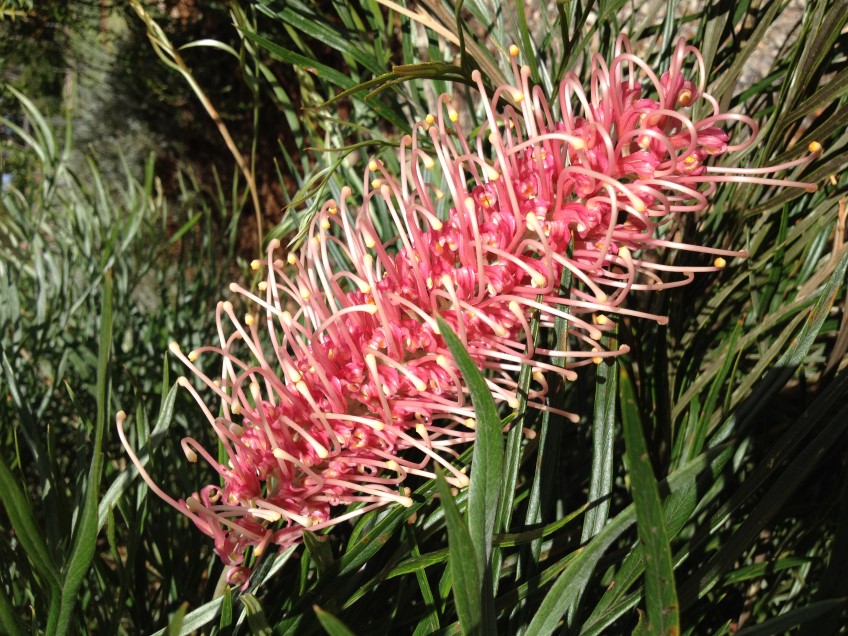 Flamingo. Photo -
Flamingo. Photo -
'Honey Gem' Grows to 6m, a cultivar between G. banksii
and G. pteridifolia. Flowers are apricot with
orange-yellow style and long flowering. Needs full sun and good drainage. Leaves have silvery reverse. This is possibly the best of the tropical cultivars.
There is a nice variegated form called 'Honey Wonder.
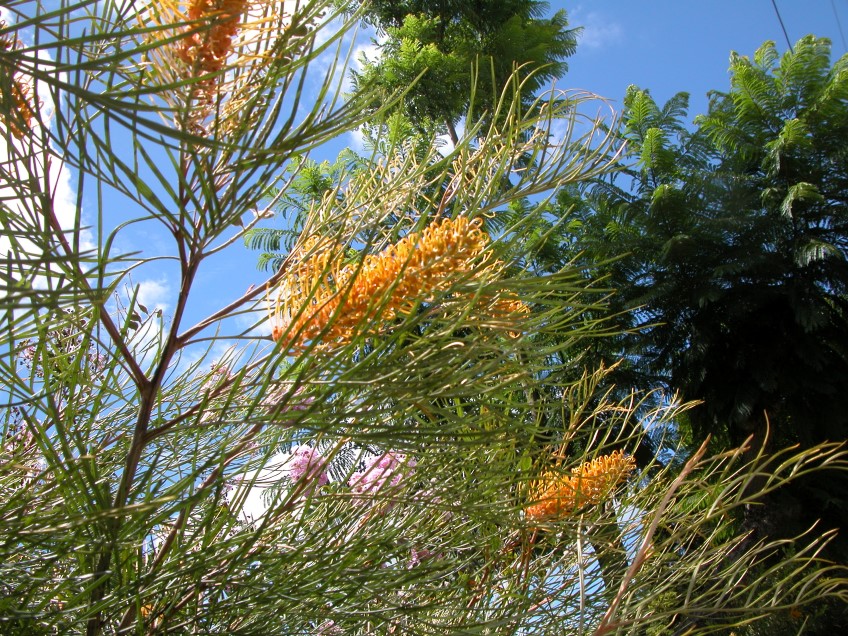
'Honey Gem' Photo - source unknown
'Ivory Whip' Grows 1.5m x 1.5m, a pure white flower with a touch of palest pink at the base ... simply divine! This grevillea tolerates
a huge temperature range from -3 to 40 degrees centigrade.
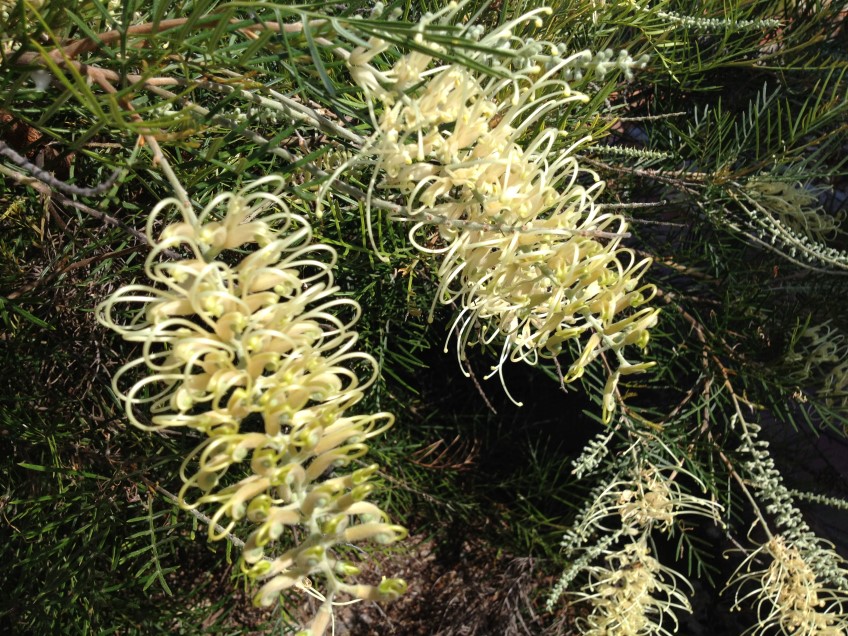
'Ivory Whip'. Photo - source unknown
Grevillea Companions
Yellow buttons, grass trees, kangaroo paw, lillypilly, native daisy, pimelia, flame pea, grafted flowering gums, Banksia 'Birthday Candles' and Acacia
'Greenmist'.
Where to find them
You can see a thousands of named grevilleas at the Grevillea Park in Bulli NSW. The garden is not always open so enquire about opening times before you
go. Many of these photographs were taken at Boongala, which is open through the flowering season with a lovely sales area of tempting tubestock. Otherwise
check out Sydney Wildflower Nursery at Heathcote or The Wildflower Place, Erina.
Text: Linda Ross